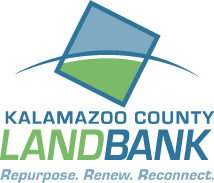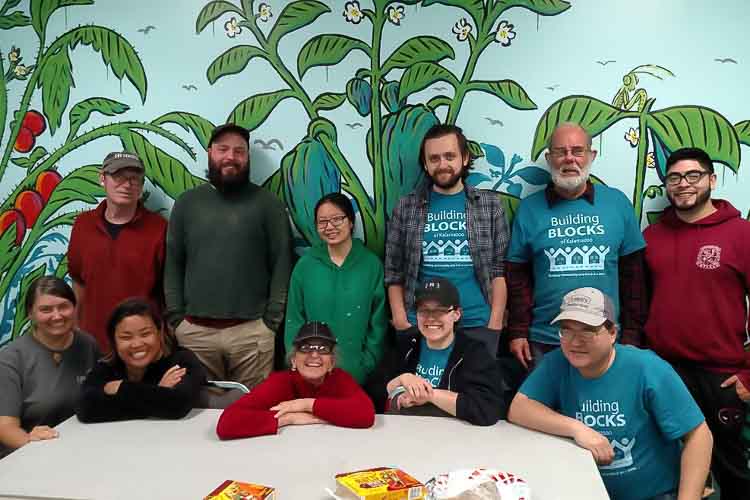From a classroom at Kalamazoo College grew a program that makes Kalamazoo’s neighborhoods safer, spruced up places where neighbors work together to make them that way.
Building Blocks got its beginning in 1995 in a sociology course taught by Dr. Kim Cummings. He wanted to provide community organizing experience for students while also supporting the efforts of neighborhood associations in the city’s low to moderate-income neighborhoods.
From two pilot projects that first year–in the Eastside and Vine neighborhoods–the program grew over the next five years years to 11 sites, located in seven neighborhoods, staffed by 30 student organizers. Students worked for 12 weeks with a group of typically eight to 12 residents on work that was important to the people living in the area. A neighborhood would be chosen, students would knock on doors to invite people to participate and find out what projects might be pursued.
Building Blocks Executive Director Carrie Drake says that as students went through the neighborhood they would tell residents, “‘Hey, we’ve got a pool of money. Right now it’s about $4,500 dollars, and if you participate, you have access to this fund to complete small-scale home improvement projects.’”
The projects had to be visible from the street or exterior home improvement projects. Before beginning the work, residents were expected to go to at least two planning meetings. “One of the most important meetings was the budget meeting,” Drake says, “where they sort of democratically allocated the funds to each other. And they approved each other’s projects. It was very much a collective effort.”
For the most part, this process is still used today by Building Blocks. The program moved out of the academic setting when Cummings retired from Kalamazoo College. It briefly was picked up by Western Michigan University, but ultimately the decision was made for Building Blocks to take the lessons that had been learned when the program was part of a class and build on them in the neighborhoods. After assessing the future of the organization and the work it hoped to accomplish, the decision was made to staff the organization and Drake was hired in 2014.
What does Building Blocks build?
With a name like Building Blocks, many people believe the mission is construction work, but the physical work that gets done is really the means to facilitate bonds between neighbors, to create and strengthen relationships, says Drake. Building Blocks is about building relationships, resident leadership, and community, especially in areas where people may be underrepresented.
“Building Blocks is focused on building community from a relationship standpoint and engaging residents in the health and the future of their community,” Drake says. “We’ve often been asked how are we different from Habitat for Humanity or Community Homeworks, and they’re building shelter and they also have components of community building, but they’re different. Our emphasis is different.”
In the past 22 years, the program has led to more than 1,600 households in the city’s low- and low-to-moderate income neighborhoods upgrading their homes when few other discretionary funds were available. And Building Blocks has helped to strengthen community ties in 134 street-level target sites.
What happened was as the students’ roles in the program declined the role of residents grew. “It’s been a nice evolution,” Drake says. “What we see is change would start with that individual in the neighborhood, and slowly, orientations of individuals shift a little bit as they work collectively on their street and then to their community. We see more civic engagement and civically-engaged people, especially, from areas where there’s a lack of representation in the different power and decision making structures, and systems, and towns.”
Two programs emerged: the Catalyst Program, which uses a short-term, 12-week approach, similar to that developed in the early days of Building Blocks, and the Sustain Program, a long-term commitment to a neighborhood by the residents and Building Blocks.
There also are Block Action Groups, neighborhood groups that form and decide they want to continue working on an ongoing basis. Block Action Groups got their start in 2011. It grew from an initiative created by a number of community development organizations who worked together on what became known as the Vine Collective in the Vine neighborhood.
Each of the community development organizations agreed to work on their area of expertise. Neighborhood Housing Services, the Kalamazoo County Land Bank, Collective Housing, Community Homeworks and Building Blocks were some of those involved.
To see full article, please visit: http://www.secondwavemedia.com/southwest-michigan/features/Together-Building-Blocks-and-neighborhood-residents-bring-about-change-1221.aspx

